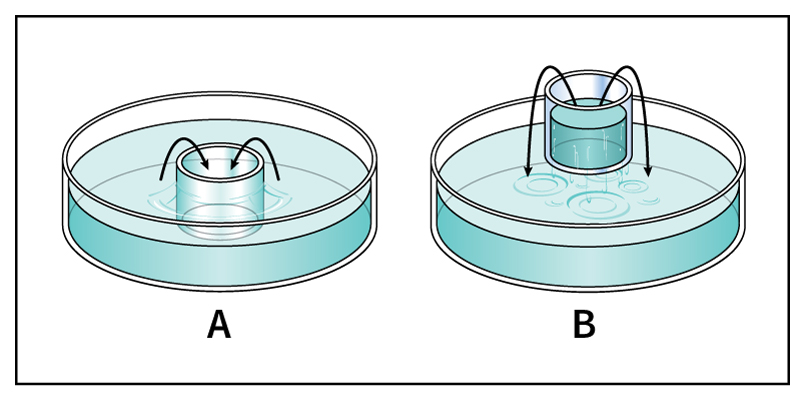Superfluid is an exotic state of matter that acts like a liquid that flows absolutely freely. An ordinary liquid flows with an internal mechanical resistance called viscosity. A familiar example of a liquid with high viscosity—that is, a large amount of internal resistance—is molasses. Water has low viscosity, but a superfluid has none. Scientists have found only two substances that can become superfluids. Both are isotopes (forms) of helium, and both must be chilled to extremely low temperatures to become superfluids.

Besides zero viscosity, a superfluid has other unusual properties. For example, spinning a container of superfluid produces microscopic whirlpools called vortexes (singular vortex) in the superfluid. A vortex will continue to spin as long as the liquid remains a superfluid. In addition, a superfluid can flow through a finely packed powder. It can also conduct heat—that is, allow heat to pass through itself—at a tremendous rate.
The two isotopes that can become superfluids are known as helium 3 and helium 4. They differ in the composition of their nuclei. A helium 3 nucleus consists of two protons and one neutron, while a helium 4 nucleus has two protons and two neutrons. At atmospheric pressure, helium 3 becomes a superfluid when chilled to less than 0.0016 Fahrenheit degree (0.0009 Celsius degree) above absolute zero (–459.67 °F or –273.15 °C). Helium 4 becomes a superfluid at atmospheric pressure when chilled to less than 3.91 Fahrenheit degrees (2.17 Celsius degrees) above absolute zero.
Soviet physicist Pyotr Kapitsa discovered superfluidity in 1937. He received the Nobel Prize in 1978 for his research in low-temperature physics.
